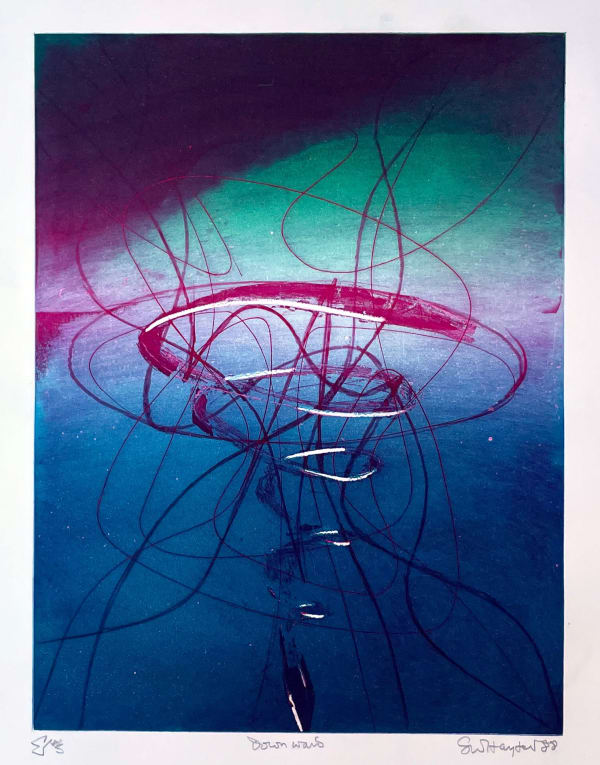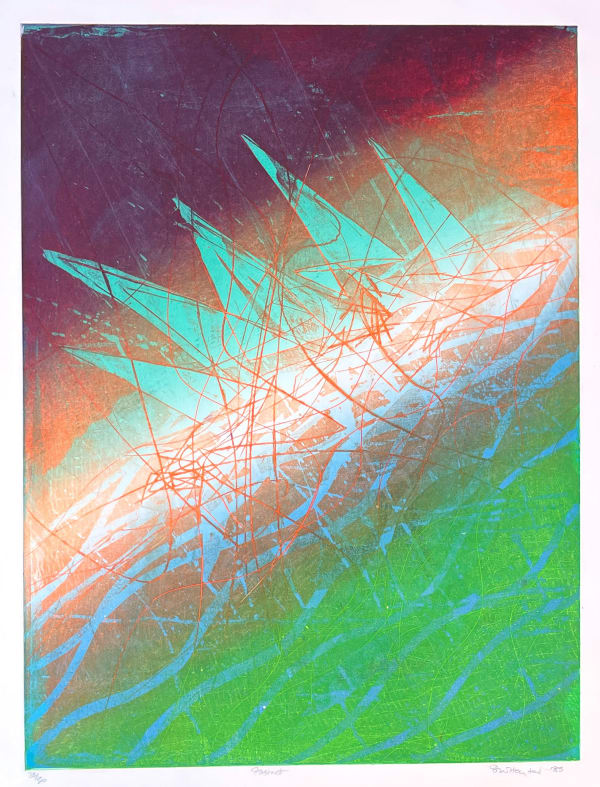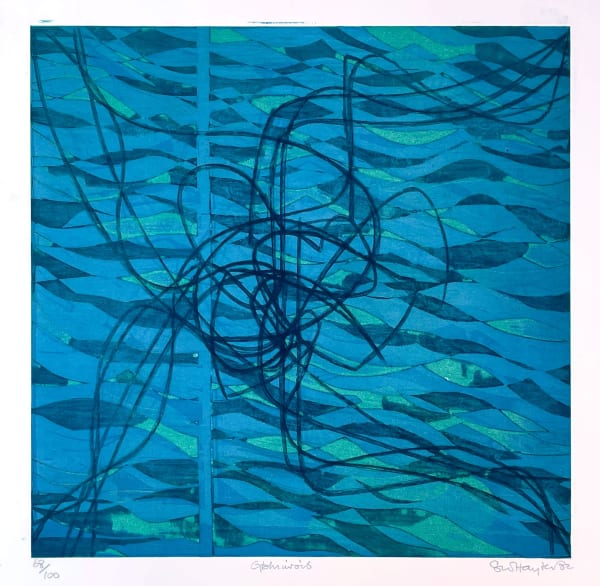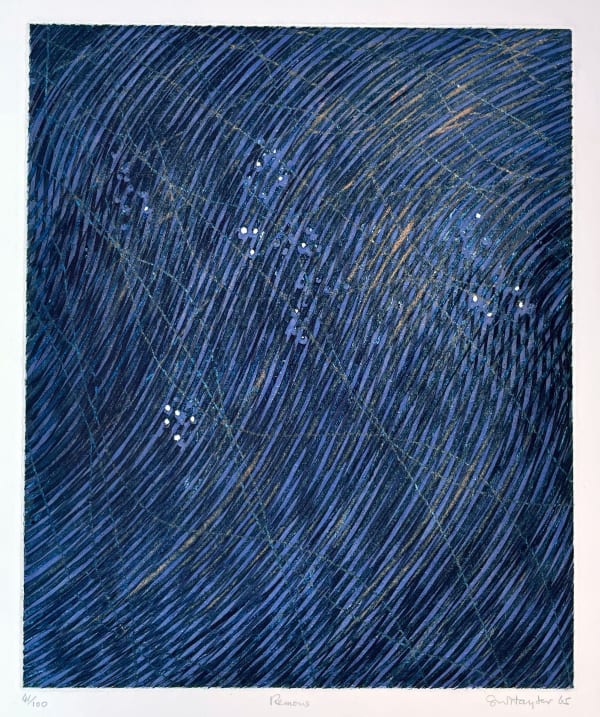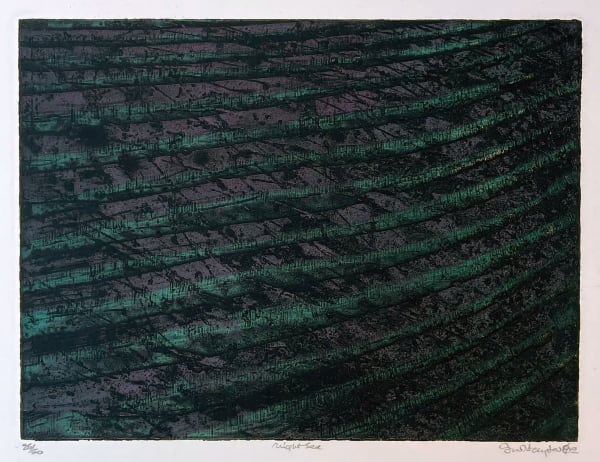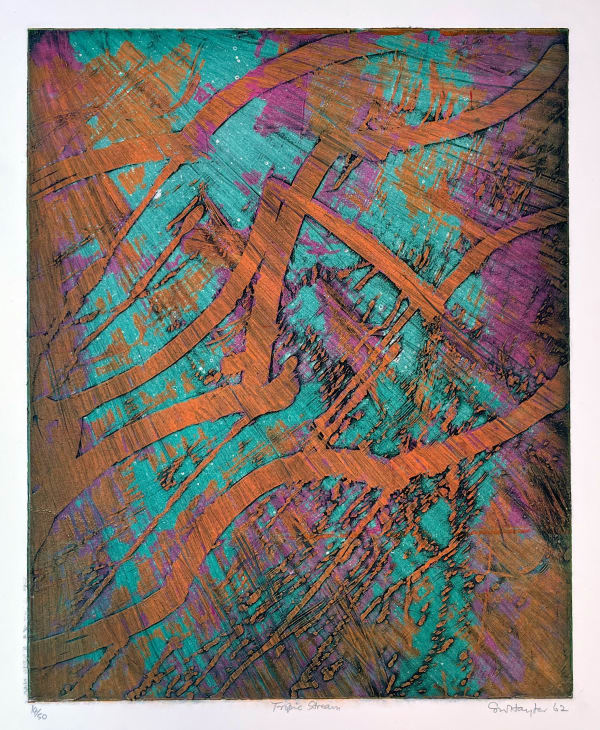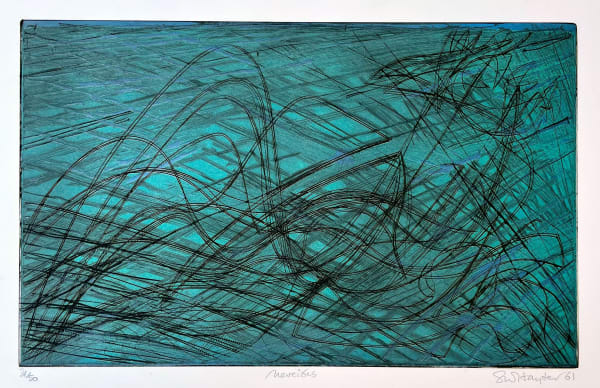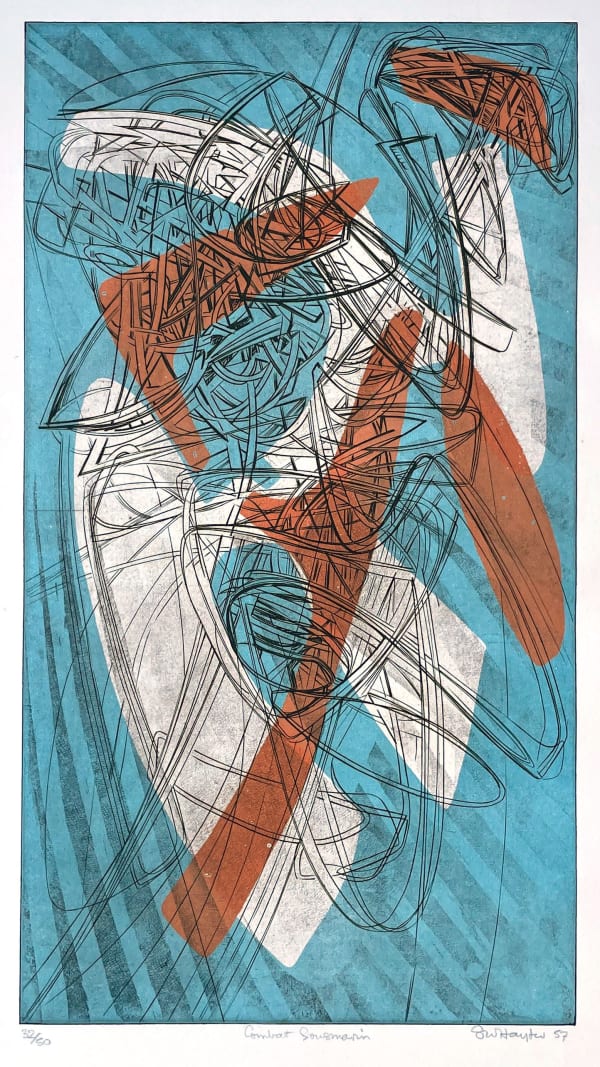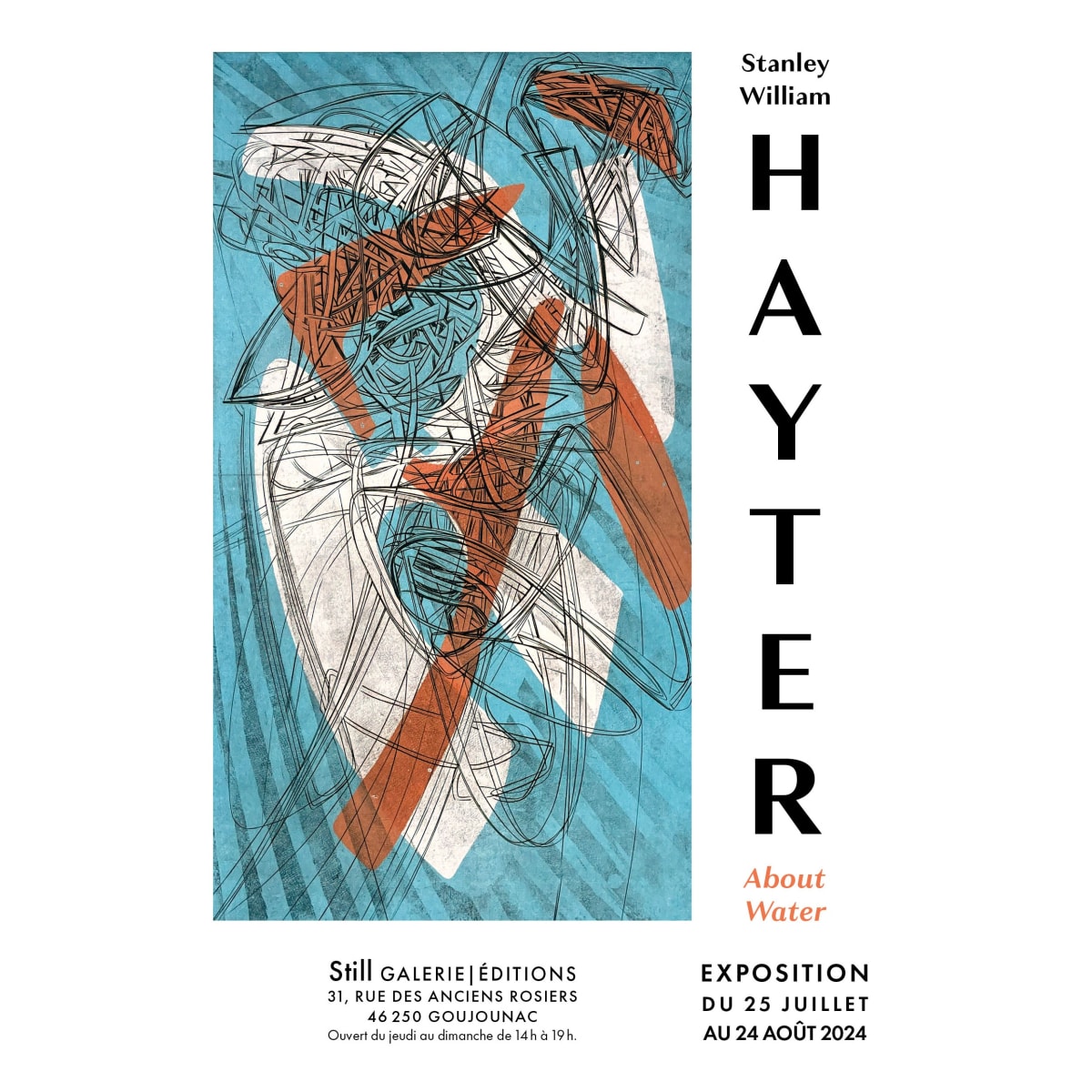Stanley William Hayter Britannique, 1901-1988
Stanley William Hayter est né à Londres en 1901.
Après des études de chimie et de géologie, il part travailler trois ans en Iran pour l’Anglo-Iranian Oil Company. De retour en Angleterre en 1925, il se rend l’année suivante étudier l’art à l’Académie Julian, à Paris. Il y fonde son atelier de gravure en 1927, L’Atelier 17, que fréquenteront tous les artistes des différentes avant-gardes ; entre autres Giacometti, Max Ernst, Picasso, Chagall, Miró…
En 1939, il quitte Paris pour Londres et travaille pour le gouvernement sur des techniques de camouflage. Invité à enseigner à la California School of Fine Arts il s’installe ensuite à New York où il réouvre l’Atelier 17 dans la New School for Social Research. Grâce à son œuvre et à son enseignement à l’Atelier 17, Hayter introduit la gravure auprès de la jeune génération des abstraits. En 1945, les artistes de l’Atelier 17 sont invités par James Johnson Sweeney, à exposer au Musée d’Art Moderne de New York.
Hayter revient à Paris en 1950, l’Atelier 17 est rétabli et il continue la peinture et la gravure.
En 1957, une rétrospective de son œuvre peint a lieu à la Whitechapel Gallery de Londres, et en 1958 il représente la Grande-Bretagne à la Biennale de Venise. En 1972, il reçoit le Grand Prix de la Ville de Paris et une exposition au Musée d’Art Moderne de la Ville de Paris lui est consacrée. Son œuvre a été exposé dans le monde entier et figure dans les collections de tous les grands musées. Il meurt à Paris en 1988.
Stanley William Hayter was born in London in 1901.
After pursuing studies in chemistry and geology, he left for Iran, to work for the Anglo-Iranian Oil Company. A year after returning to England in 1925, he left again, to study at the Académie Julian in Paris. There in 1927, he established his studio Atelier 17, which became a meeting place for many avant-garde artists: Giacometti, Ernst, Picasso, Chagall, Miró, among others.
In 1939, he left Paris for London, working for the government on camouflage production. Later, after receiving an invitation to teach at the California School of Fine Arts, he settled in New York, where he reopened Atelier 17 at the New School for Social Research. Through his work and his teaching at Atelier 17, Hayter introduced printmaking to the young generation of abstract artists. In 1945, the artists of Atelier 17 were invited by James Johnson Sweeney to exhibit their works at the Museum of Modern Art in New York.
Hayter returned to Paris in 1950, reestablished Atelier 17, and continued to produce paintings and prints.
In 1957, Whitechapel Gallery in London held a retrospective exhibition of his painted works, and in 1958 he represented Great Britain at the Venice Biennale. In 1972, he was awarded the Grand Prix de la Ville de Paris and given an exhibition at the Musée d'Art Moderne de la Ville de Paris. His works have been exhibited around the world and represented in the collections af all major museums. He died in Paris in 1988.
Hayter, Georges Limbour
Le musée de Poche, 1962
New Ways of Gravure, S.W.Hayter
Oxford University Press, 1966
About Prints, S.W.Hayter
Oxford University Press, 1966
New Ways of Gravure, S.W.Hayter [édition révisée]
Watson-Guptill Publishing, 1982
S. W. Hayter, Symphonic Poem of Lines – Paris New York
The Japan Hayter Exhibition Committee, 1985
The Renaissance of Gravure. The Art of Stanley William Hayter
P. M. S Hacker, Clarendon Press, 1988
Hayter e l’Atelier 17, Carla Esposito
Mondadori Electa, 1990
The Prints of Stanley William Hayter, Peter Black & Desirée Moorhead
Phaïdon, 1992
Hayter et l’Atelier du monde. Entre surréalisme et abstraction. 1927-1964
Musée des Beaux-Arts de Rennes/éditions mare et martin, 2021

